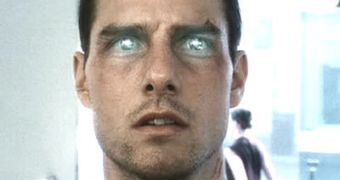Not only Tom Cruise could praise with this. What you've seen in movies, like "Minority report" and other fiction films, could turn into reality.
"It is not science fiction to think that our eyes could very soon be the key to unlocking our homes, accessing our bank accounts and logging on to our computers", said researcher Sammy Phang, of Queensland University of Technology. Her team at QUT's Faculty of Built Environment and Engineering is going to solve the last issues impeding the use of iris scanning technology, which would work like fingerprinting.
"Every individual iris is unique and even the iris pattern of the left eye is different from the right. The iris pattern is fixed throughout a person's lifetime. By using iris recognition it is possible to confirm the identity of a person based on who the person is rather than what the person possesses, such as an ID card or password. It is already being used around the world and it is possible that within the next 10 to 20 years it will be part of our everyday lives", said Phang.
"Although iris recognition systems are being used in a number of civilian applications, the system is not perfect. Changes in lighting conditions change a person's pupil size and distort the iris pattern. If the pupil size is very different, the distortion of the iris pattern can be significant, and makes it hard for the iris recognition system to work properly", she added.
That's why her team is searching for a method that would rapidly assess changes in the iris due to shifts in lighting conditions.
"It is possible for a pupil to change in size from 0.8mm to 8mm, depending on lighting conditions. By using a high-speed camera which could capture up to 1200 images per second it was possible to track the iris surface's movements to study how the iris pattern changed depending on the variation of pupil sizes caused by the light. The study showed that everyone's iris surface movement is different. Preliminary image similarity comparisons between the actual iris image and the estimated iris image based on this study suggest that this can possibly improve iris verification performance", said Phang.

 14 DAY TRIAL //
14 DAY TRIAL //